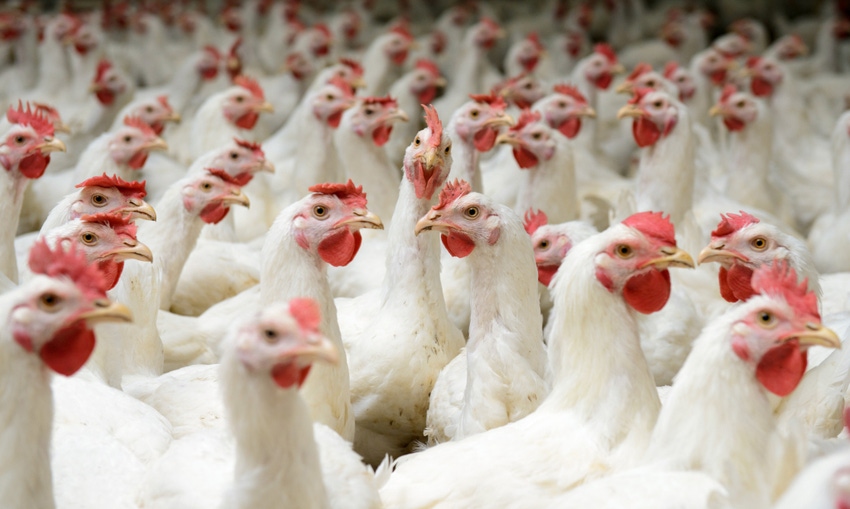Only very small proportion of U.S. broiler meat affected by HPAI-related restrictions.

The U.S. Department of Agriculture's latest “Livestock, Dairy & Poultry Outlook” noted that February broiler meat production was 3.2 billion lb., approximately 1.7% above last year on a per day basis. However, average weights were marginally below a year earlier, representing only the third time since 2012 that weights failed to increase. Preliminary data suggested that March 2017 production was also higher than a year earlier.
“Growth in the number of broiler eggs set in incubators has been relatively strong, increasing the potential number of birds produced,” USDA noted.
On a year-to-date basis, these egg sets were up 2.1% nationwide for the 13-week period ending April 1. “The impact on broiler production may have been reduced, however, by a lower proportion of the hatched chicks being placed in facilities that grow broilers for meat,” USDA added.
Broiler exports higher in February
Broiler exports in February were 545 million lb., up 2% from last year. USDA said countries that contributed significantly to export growth included Angola, South Africa, Cuba, Kazakhstan, United Arab Emirates, Chile and Republic of Congo; in aggregate, these countries imported an averaged of over 8 million lb. more than a year earlier.
According to USDA, exports to South Africa totaled nearly 25 million lb., easily surpassing the record level attained in recent months. Additionally, the U.S. will likely fulfill its quota of approximately 143 million lb. for bone-in chicken well before the year concludes, USDA said.
Exports were lower to Mexico, Iraq, Turkey, Canada, Singapore, Libya, Afghanistan and the Philippines, averaging 7 million lb. less per country.
Avian influenza
The U.S. confirmed a total of two cases of highly pathogenic avian influenza (HPAI) through its March reports to the World Organization for Animal Health. These HPAI cases occurred in broiler breeder flocks in Tennessee and caused the loss of nearly 128 thousand birds, USDA said.
“Nearly all trading partners that responded with trade restrictions imposed only limited restrictions on poultry and products from Tennessee or from more limited areas in the vicinity of avian influenza findings," the agency reported. "Only a very small proportion of U.S. broiler meat would be affected by these restrictions.”
USDA reported that weekly prices for whole broilers (national composite) trended higher relatively sharply in March, remaining above 98 cents for the weeks ending March 24 and March 31. “This reflected a stronger-than-expected seasonal increase,” the agency said.
The second-quarter 2017 forecast for the national composite was increased to 91-95 cents/lb., moving the annual forecast to 86-90 cents/lb. from 83-89 cents.
“Higher prices were seen during March for most of the chicken parts that are tracked by USDA on the Northeast market, potentially representing strength in consumer demand,” USDA said.
The agency added that boneless/skinless breasts appeared to lead the upward price shift by increasing nearly 15 cents during the period between the weeks ending Feb. 17 and March 3. Adding another 7 cents during March, boneless/skinless breasts surpassed $1.28/lb. for the week ending March 31.
About the Author(s)
You May Also Like

.png?width=300&auto=webp&quality=80&disable=upscale)

